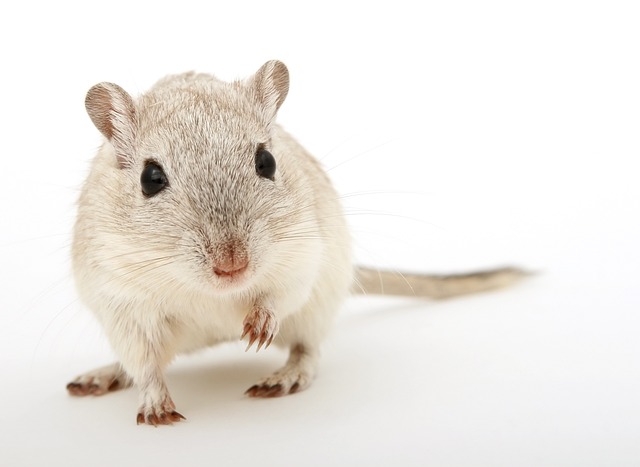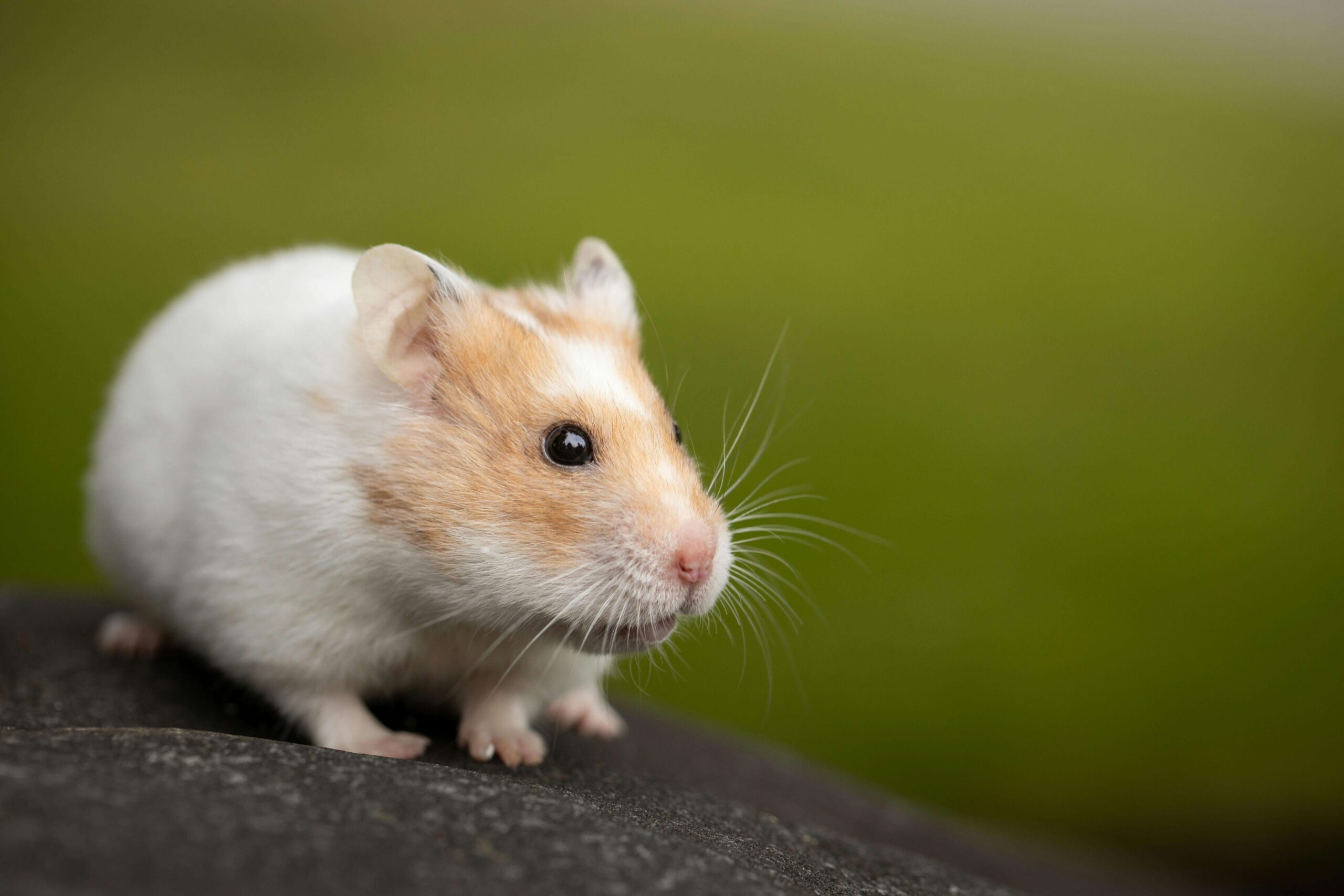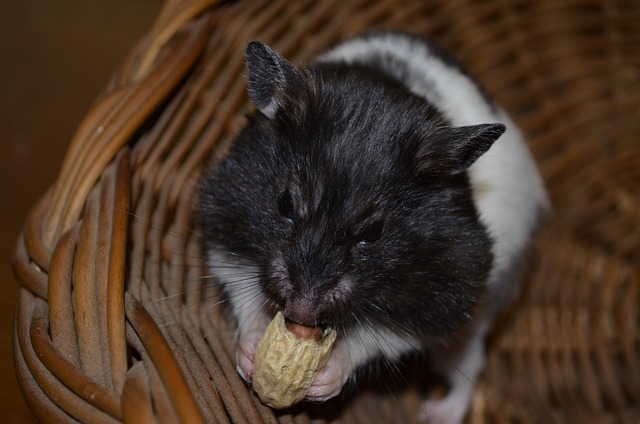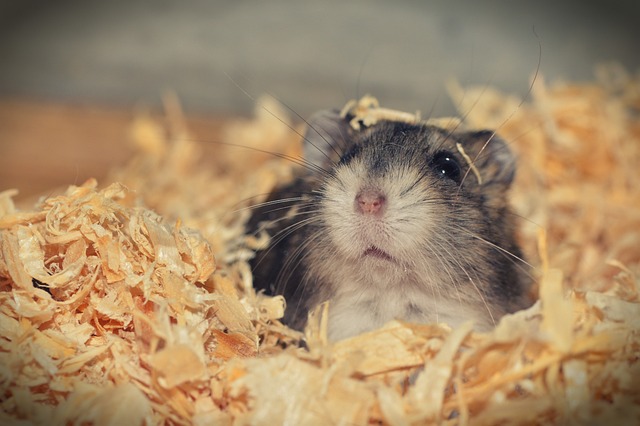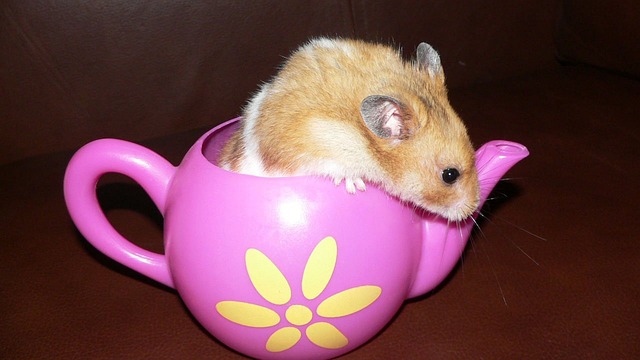How To Make My Pet Hamster Healthy
Providing a Balanced Diet: Ensuring Your Hamster’s Nutritional Needs Are Met
As a responsible pet owner, one of the most crucial aspects of caring for your hamster is providing them with a balanced diet. A well-rounded diet ensures that your furry friend receives all the necessary nutrients to maintain optimal health, promote growth, and support their overall well-being. In this article, we will explore the essential components of a hamster’s diet and offer guidance on how to ensure your pet’s nutritional needs are met.
Understanding Your Hamster’s Natural Diet
In the wild, hamsters are opportunistic feeders, consuming a variety of foods such as seeds, grains, fruits, and insects. As pet owners, it is our responsibility to mimic their natural diet as closely as possible to ensure they receive the appropriate balance of nutrients. A hamster’s diet should consist of a combination of commercial hamster food, fresh fruits and vegetables, and occasional protein sources.
Choosing the Right Commercial Hamster Food
When selecting a commercial hamster food, opt for a high-quality, fortified mix specifically designed for hamsters. Look for a blend that contains a variety of grains, seeds, and pellets, which provide essential vitamins, minerals, and fiber. Avoid mixes with added sugars or artificial colors, as these can lead to obesity and other health issues. Remember to store the food in an airtight container to maintain freshness and prevent spoilage.
Incorporating Fresh Fruits and Vegetables
In addition to commercial food, fresh fruits and vegetables should be a part of your hamster’s diet. These foods provide additional vitamins, minerals, and hydration. Some hamster-safe options include:
- Fruits: Apples (seedless), bananas, berries, melon
- Vegetables: Carrots, cucumbers, leafy greens, peas
Introduce new foods gradually and in small quantities to avoid digestive upset. Remove any uneaten fresh food from the cage daily to prevent spoilage and maintain a hygienic environment.
Protein Sources and Treats
Hamsters require a small amount of protein in their diet. Occasionally, you can offer your hamster mealworms, crickets, or a small piece of hard-boiled egg as a protein source. These treats should be given sparingly, as excessive protein can lead to health problems.
When it comes to other treats, such as hamster-safe fruits, vegetables, or commercial treats, offer them in moderation. Treats should make up no more than 10% of your hamster’s total daily food intake to prevent nutritional imbalances and obesity.
Providing Fresh Water
In addition to a balanced diet, access to clean, fresh water is essential for your hamster’s health. Provide a water bottle with a sipper tube, and clean and refill it daily. Regularly check the bottle to ensure it is functioning properly and that your hamster is drinking an adequate amount of water.
Monitoring Your Hamster’s Health
As you provide your hamster with a balanced diet, pay attention to their overall health and well-being. Monitor their weight, and adjust food portions accordingly to maintain a healthy body condition. Watch for signs of illness, such as lethargy, diarrhea, or loss of appetite, and consult with a veterinarian if you have any concerns about your hamster’s health.
By following these guidelines and providing your hamster with a balanced diet, you can ensure that your furry companion receives the necessary nutrition to thrive. A well-planned diet, combined with proper housing, exercise, and regular health check-ups, will contribute to a happy and healthy life for your beloved pet hamster.
Creating the Perfect Habitat: Designing a Safe and Comfortable Living Space
When bringing a pet hamster into your home, one of the most important responsibilities is creating a safe and comfortable living space that caters to their specific needs. A well-designed habitat not only ensures your hamster’s physical well-being but also promotes their mental health and happiness. In this article, we will guide you through the essential elements of crafting the perfect home for your furry friend.
Choosing the Right Cage Size
The foundation of a perfect hamster habitat is a spacious cage. Hamsters are active creatures that require ample room to explore, play, and exercise. A general rule of thumb is to provide a cage that is at least 24 inches by 12 inches and 12 inches tall for smaller hamster breeds, such as dwarf hamsters. For larger breeds like Syrian hamsters, opt for a cage that is at least 30 inches by 18 inches and 18 inches tall. Remember, when it comes to hamster cages, bigger is always better.
Selecting Appropriate Bedding Material
The bedding material you choose plays a crucial role in creating a cozy and hygienic environment for your hamster. Avoid cedar and pine shavings, as they can cause respiratory issues. Instead, opt for safe and absorbent options such as:
- Paper-based bedding: Unscented, dust-free paper bedding is a popular choice for its absorbency and comfort.
- Aspen wood shavings: Kiln-dried aspen shavings are a safe alternative to cedar and pine.
- Organic paper or hemp bedding: These eco-friendly options are highly absorbent and provide a soft surface for your hamster to burrow and nest.
Provide a bedding depth of at least 2-3 inches to allow your hamster to engage in natural burrowing behaviors.
Incorporating Essential Cage Accessories
To create a stimulating and comfortable environment, include the following essential accessories in your hamster’s habitat:
- Exercise wheel: Hamsters require daily exercise, and a properly sized, solid-surface wheel is a must-have item.
- Hiding spots: Offer your hamster hiding places such as small wooden houses, coconut shells, or ceramic hides to provide a sense of security and privacy.
- Chew toys: Hamsters have continuously growing teeth, so chew toys made of safe wood or organic materials are essential for maintaining dental health and preventing boredom.
- Food dish and water bottle: Provide a sturdy, shallow food dish for your hamster’s daily meals and a water bottle with a sipper tube for a constant supply of fresh water.
Maintaining a Clean and Hygienic Environment
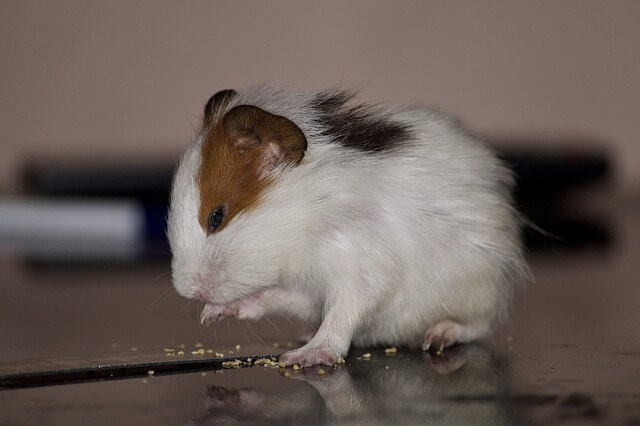
Regular cleaning is crucial for maintaining a healthy and odor-free living space for your hamster. Perform the following tasks to keep their habitat in top condition:
- Spot clean daily: Remove soiled bedding, discarded food, and droppings daily to prevent the buildup of harmful bacteria.
- Deep clean weekly: Once a week, thoroughly clean the entire cage, including accessories, with a pet-safe disinfectant. Replace all bedding and wash the cage and accessories with hot, soapy water.
- Monitor for signs of illness: Regularly check your hamster’s habitat for signs of illness, such as diarrhea, excessive moisture, or unusual odors, and address any concerns promptly.
Providing a Safe and Secure Location
When setting up your hamster’s habitat, choose a quiet, draft-free area in your home away from direct sunlight and extreme temperatures. Ensure the cage is securely closed and placed on a stable surface to prevent escape and accidents.
By following these guidelines and creating a well-designed habitat tailored to your hamster’s needs, you can ensure that your furry companion thrives in a safe, comfortable, and stimulating environment. A perfect hamster habitat is the foundation for a happy and healthy pet, promoting their overall well-being and providing them with a high quality of life.
Keeping Your Hamster Active: The Importance of Exercise and Mental Stimulation
As a responsible hamster owner, providing your furry friend with opportunities for regular exercise and mental stimulation is just as important as ensuring a balanced diet and a comfortable living space. Hamsters are naturally active and curious creatures that require daily physical activity and mental engagement to maintain their overall health and well-being. In this article, we will explore the benefits of exercise and mental stimulation for your hamster and provide ideas for keeping them active and entertained.
The Benefits of Exercise for Hamsters
Regular exercise offers numerous physical and mental health benefits for hamsters, including:
- Maintaining a healthy weight: Exercise helps prevent obesity, which can lead to various health issues such as diabetes and heart problems.
- Promoting cardiovascular health: Daily physical activity strengthens your hamster’s heart and improves blood circulation.
- Supporting muscle and bone health: Exercise helps maintain strong muscles and bones, reducing the risk of age-related muscle weakness and osteoporosis.
- Enhancing mental well-being: Physical activity provides mental stimulation, reduces stress, and prevents boredom-related behaviors such as excessive chewing or bar-biting.
Providing Exercise Opportunities
To ensure your hamster gets sufficient exercise, consider the following options:
- Exercise wheels: A properly sized, solid-surface exercise wheel is a must-have item in your hamster’s habitat. Ensure the wheel is large enough to prevent back arching and has a solid surface to avoid foot injuries.
- Playpen or hamster ball: Supervised playtime outside the cage in a secure playpen or hamster ball allows your hamster to explore and exercise in a larger area. Always monitor your hamster during these sessions to ensure their safety.
- Climbing toys: Offer your hamster climbing toys such as ladders, bridges, or multi-level platforms to encourage physical activity and provide mental stimulation.
The Importance of Mental Stimulation
In addition to physical exercise, mental stimulation is crucial for keeping your hamster happy and healthy. Engaging your hamster’s mind helps prevent boredom, reduces stress, and promotes natural foraging and problem-solving behaviors. Incorporate the following elements to provide mental stimulation:
- Chew toys: Hamsters have a natural instinct to chew, and providing a variety of safe chew toys helps keep their teeth trimmed and their minds engaged. Offer wooden chew toys, organic chew sticks, or hay cubes.
- Foraging toys: Hide treats or food pellets in foraging toys such as puzzle feeders or scatter them throughout the bedding to encourage natural foraging behaviors and mental stimulation.
- Tunnels and hideouts: Create an engaging environment with tunnels, hideouts, and nest-building materials to satisfy your hamster’s natural burrowing and nesting instincts.
Incorporating Variety and Rotation
To keep your hamster interested and mentally stimulated, regularly rotate toys and accessories in their habitat. Introduce new items, rearrange existing ones, and create different layouts to provide a sense of novelty and encourage exploration.
Monitoring Your Hamster’s Activity Levels
As you provide opportunities for exercise and mental stimulation, observe your hamster’s activity levels and behavior. Ensure they are engaging with the provided toys and accessories, and watch for signs of lethargy or reduced activity, which may indicate an underlying health issue. Consult with a veterinarian if you have any concerns about your hamster’s activity levels or overall well-being.
By prioritizing exercise and mental stimulation, you can help your hamster lead a happy, healthy, and fulfilling life. A combination of physical activity, engaging toys, and a stimulating environment will keep your furry friend active, mentally sharp, and content in their forever home.
Regular Health Check-Ups: Monitoring Your Hamster’s Well-being and Preventing Illness
As a devoted hamster owner, ensuring your furry companion’s health and well-being should be a top priority. Regular health check-ups play a crucial role in monitoring your hamster’s overall condition, detecting potential issues early, and preventing serious illnesses. In this article, we will discuss the importance of regular health check-ups and provide guidance on how to effectively monitor your hamster’s well-being.
The Importance of Regular Health Check-Ups
Regular health check-ups are essential for several reasons:
- Early detection of health issues: By consistently monitoring your hamster’s health, you can identify potential problems early, allowing for prompt treatment and a better prognosis.
- Preventing serious illnesses: Regular check-ups help prevent minor issues from escalating into severe health problems, ultimately contributing to your hamster’s longevity and quality of life.
- Establishing a baseline: Routine check-ups establish a baseline for your hamster’s normal health parameters, making it easier to spot any deviations or abnormalities.
At-Home Health Monitoring
As a hamster owner, you can perform regular at-home health checks to monitor your pet’s well-being. Here’s what to look for:
- Body condition: Regularly weigh your hamster and assess their body condition. A healthy hamster should have a balanced, oval shape without visible bones or excessive fat deposits.
- Coat and skin: Check your hamster’s coat for cleanliness, shininess, and absence of bald patches or skin irritations. Gently part the fur to examine the skin for any lumps, bumps, or wounds.
- Eyes, nose, and ears: Your hamster’s eyes should be clear, bright, and free of discharge. The nose should be dry and free of any mucus or crusting. Ears should be clean and free of wax buildup or redness.
- Teeth and mouth: Regularly inspect your hamster’s teeth for proper alignment, length, and absence of chips or breaks. The mouth should be free of any sores, swelling, or unusual odors.
- Droppings and urine: Monitor your hamster’s droppings for consistency, color, and frequency. Healthy droppings should be firm, well-formed, and free of mucus or blood. Urine should be pale yellow and free of any strong odors.
- Behavior and activity levels: Observe your hamster’s behavior and activity levels for any changes, such as lethargy, reduced appetite, or abnormal gait.
Professional Veterinary Check-Ups
In addition to at-home monitoring, regular veterinary check-ups are essential for your hamster’s health. Schedule annual or semi-annual visits with an exotic pet veterinarian who has experience in treating hamsters. During these check-ups, your veterinarian will:
- Perform a comprehensive physical examination to assess your hamster’s overall health
- Check for any signs of illness, such as dental problems, respiratory issues, or tumors
- Provide preventive care, such as parasite control or nutritional advice
- Address any concerns or questions you may have about your hamster’s health
Maintaining a Health Journal
To help you stay organized and track your hamster’s health, consider keeping a health journal. Record the following information:
- Date of health check-ups (both at-home and veterinary)
- Weight and body condition
- Any abnormalities or concerns observed
- Medications, treatments, or preventive care provided
- Changes in behavior or activity levels
A health journal can be a valuable tool for monitoring your hamster’s well-being and communicating effectively with your veterinarian.
Addressing Health Concerns Promptly

If you notice any signs of illness or abnormalities during your at-home health checks or if your hamster’s behavior changes suddenly, contact your veterinarian promptly. Early intervention is key to preventing serious health problems and ensuring your hamster receives the necessary care and treatment.
By prioritizing regular health check-ups, both at home and with a professional veterinarian, you can effectively monitor your hamster’s well-being, detect potential issues early, and ensure your furry friend enjoys a happy, healthy life by your side. Remember, prevention and early intervention are the keys to a thriving hamster.


